This post is about two techniques, Spare Sigils and Zentangle, and how the similarities and differences between the two illuminate other techniques, such as UML.
1
Spare Sigils are a magical technique, invented and described by A. O. Spare, in his book "The Book of Pleasure", published 1913.
Very briefly, the method is to write down a single-sentence wish, goal, or outcome, and then draw the letterforms occurring in the sentence joined together and/or overlapping, and iteratively simplify and redraw the combined form until you're happy with it.
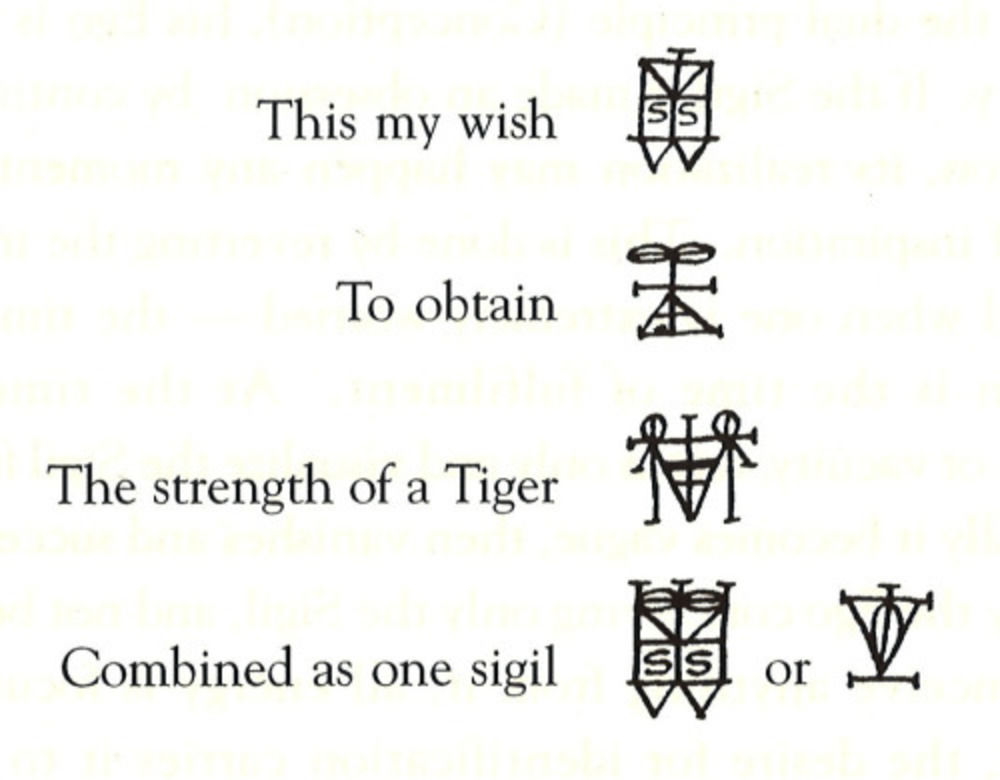
2
Zentangle is a relaxation technique, invented and described by Rick Roberts and Maria Thomas in their book "The Book of Zentangle", published 2012.
Very briefly, the method is to draw a border and a "string", a single freeform guiding line, and then iteratively fill the regions of the drawing with simple repetitive patterns until you're happy with it. This how-to has more details.
These two example zentangles are by Tricia J:
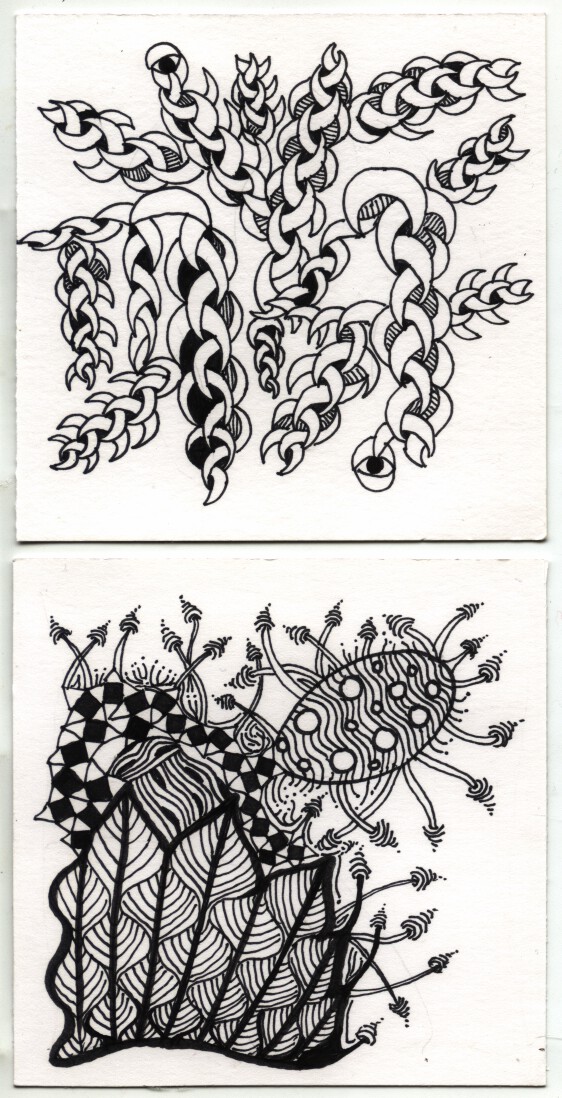
3
Putting these two techniques beside one another allows us to generalize (two points generalize to a line), to describe their common structure.
In both cases, there is a strong procedural component. The text confidently and authoritatively tells you that there is a technique, that the text will teach you the technique, and then tells you the steps of the technique.
In both cases, the procedural instructions are accompanied by repeated assurances that you cannot do this wrong, to embrace mistakes, and encouragement to seek automaticity. For example, "Allow the pattern to reveal itself as you draw." or "You'll know when it's time to put down your pen." are Zentangle instructions, but could just as easily come from Sigil instructions.
In both cases, there is iteration, looking at what you have drawn before, and reacting to that in what you draw next.
The two techniques both make promises, but somewhat different promises.
Sigil magic instructions promise magical effectiveness, which is, in a sense, an enormous variety of different promises, since in principle you could write down anything, but there are a couple ways that this very strong promise is weakened.
First, Sigil magic instructions often contain hedges. For example, a hedge might state that the magic will not work in any specific timeframe. "The spirit world has no understanding of time." Or the magic may only boost the probability of the desired outcome slightly. These caveats surround the core hypothesis of magical effectiveness with auxiliary hypotheses. This core-and-shell structure of theories is the Dunhem-Quine thesis.
Second, in practice people usually apply sigil magic to particular kinds of wishes/goals/outcomes. For example: "My characters cooperate with my plot", "I stay focused in school", "I am able to let go", and "I am a distinct individual". Generally, these goals are partly under the caster's control, or at least, might be under the control of the caster's unconscious. Spare Sigils were intended as a way of communicating with your own unconscious.
The Zentangle method promises less, or has less potential variety in its promises, but also may contain fewer hedges. Their promises include a feeling of relaxed focus, increased creativity, and/or creative confidence.
Another thing we can do by putting these two techniques beside one another is to look at one from the perspective of another.
Zentangle is straightforwardly recognizable as enchanting for relaxed focus, increased creativity, and/or creative confidence. It might be even more effective if you add other ritual magical elements, such as rolling out a cloth, lighting appropriately colored and/or scented candles, orienting your workspace deliberately to a cardinal direction, ringing a bell, and treating your drawing tools carefully.
On the other hand, Spare Sigils are a doodling technique. The tradition of letterform-like black-on-white diagrams, with generally circular seal-like structure, is probably unnecessarily confining. Experiment with textural elements. Play with figure/ground. Consider starting with an organizing string instead of, or in addition to, words. Maybe name and list some of the transformations your Sigils go through.
4
We can also look at other things through the lens of the common line between Sigils and Zentangle. UML is an iterative doodling/sigilization technique, which promises insight into and clear communications about software architecture.
This is a single example UML diagram, iteratively redrawn. Often descriptions of UML don't emphasize this, but in practice it is always iteratively redrawn, either in preparation for a formal presentation or over the course of several informal presentations, or both.
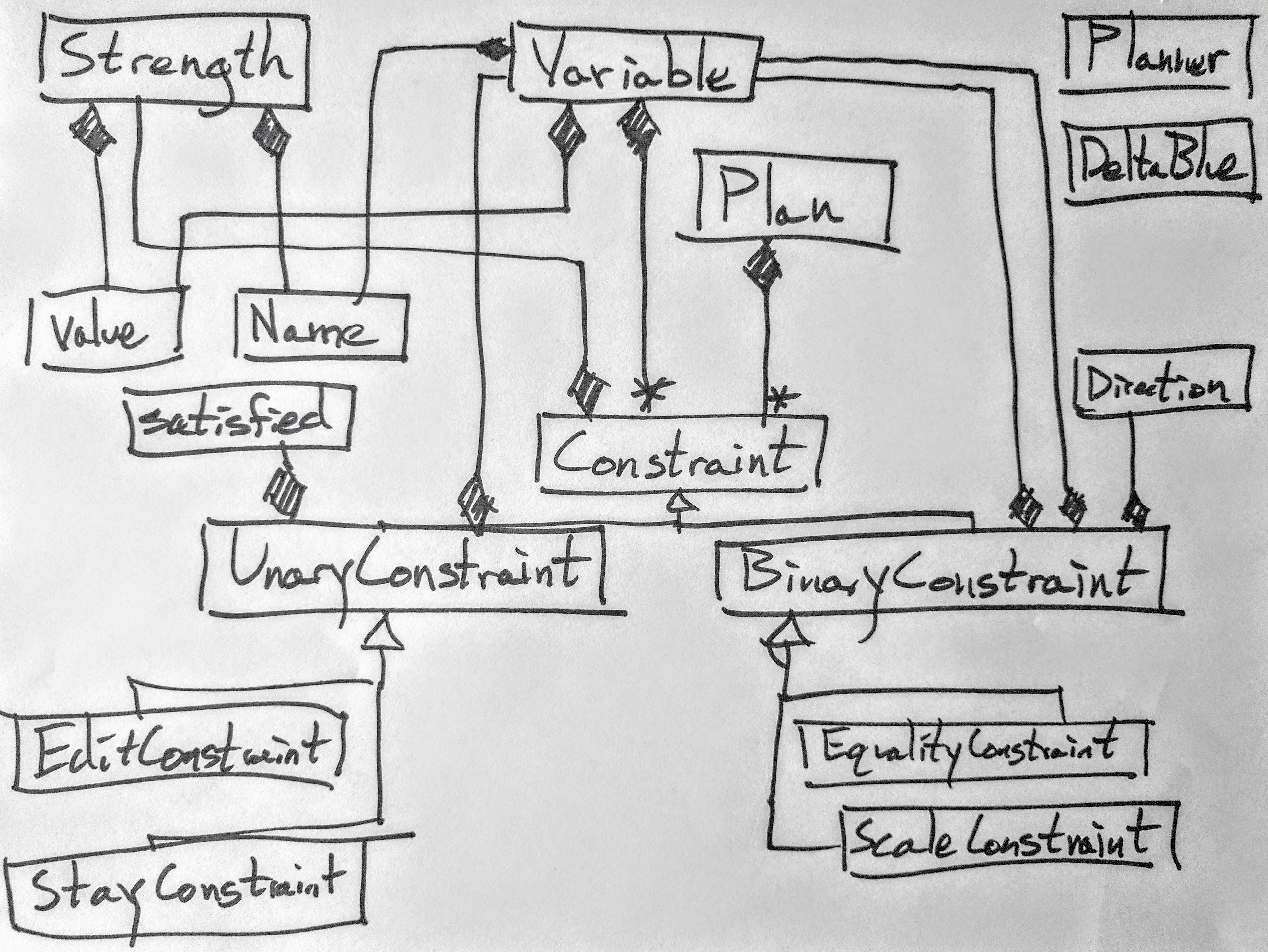
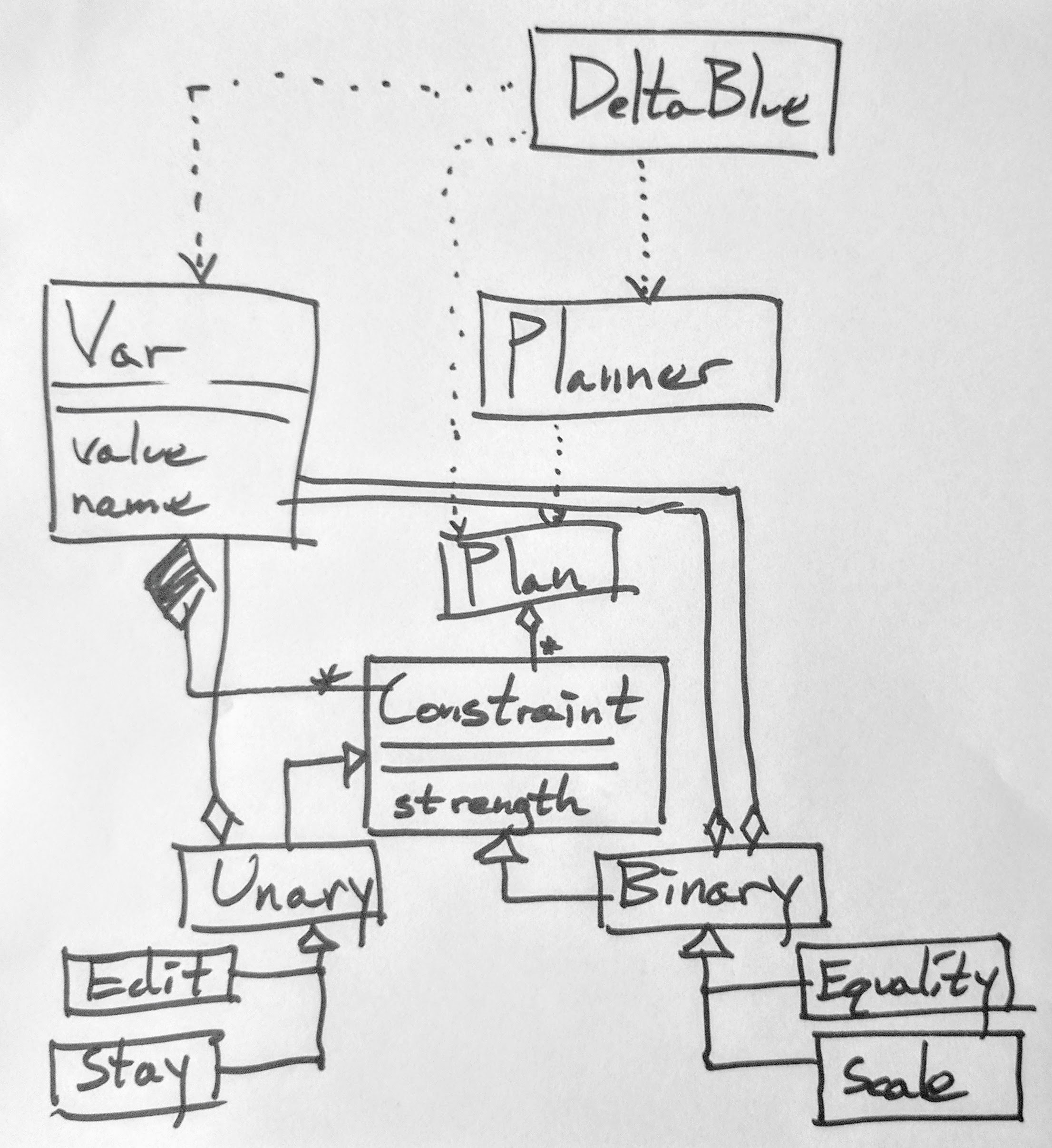
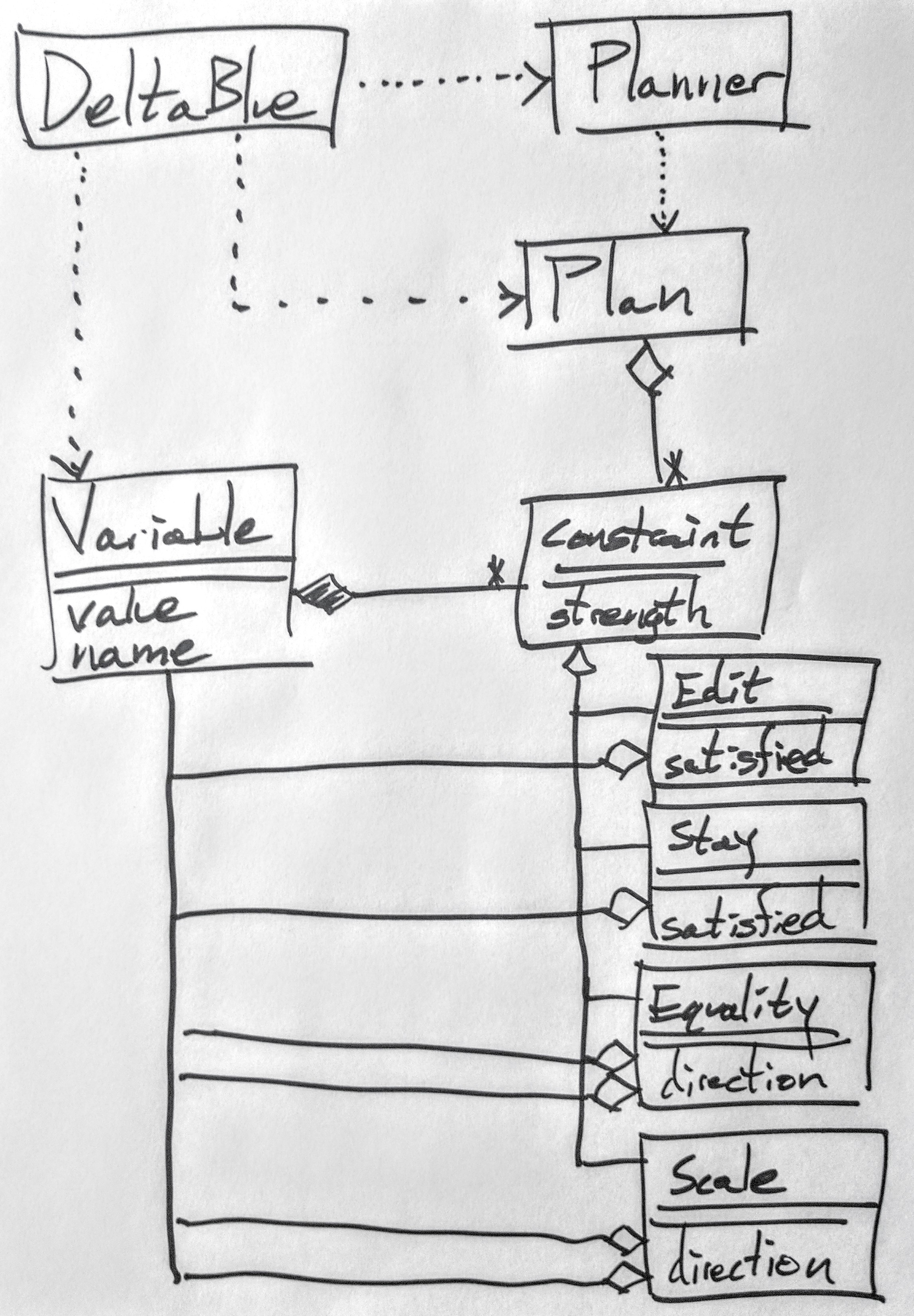
Normally, I would stopped around here. Maybe I would have used the last version as input to an automated layout tool like yUML. Inspired by this analogy, I tried to go further, and create an even more simplified version, as if I were routinely building large architectures that use the DeltaBlue library, or some similar library as a component.
A digression about DeltaBlue: There are two important things, the constraints and the variables. The two together form a graph datastructure. There is a hierarchy of kinds of constraints, and the details of the hierarchy are not actually stable - if you were applying constraint propagation to a new problem, you would probably need to add new kinds of constraints to the constraint hierarchy. Finally, each constraint has a strength, expressing that some are heuristics or preferences while but others are more important.

The C represents constraints. The V represents variables. The two arrows represent that the constraints and variable form a graph, because given an edge you can find its source, which will be a node, and its target, which will be a node. The triangle around the C represents that the constraints form a hierarchy. The S below the triangle represents that each constraint has a strength.
6
In conclusion:
- Maybe tight adherence to the UML standard is damaging the utility of the UML technique, and that particular people dealing with particular pieces of software should probably drift away from the UML standard, by introducing their own particular graphical elements.
- Maybe the iterative sketching in whiteboard use of UML might be actively helpful, and consequently tools that "efficiently" draw UML for the programmer, by automatically translating a body of source code or a textual formal specification, might be damaging some of the functions of whiteboard UML.
- Maybe the effects (insight and improved communications) promised by the UML standard might be magical, psychological, or both.
- Maybe the core hypothesis of effectiveness of UML for software architecture is protected from falsification by auxilliary hypotheses.
- Consider overcoming the obstacle of a blank page by starting a software design with a sentence; a wish, goal, or outcome, and rearranging the words of the sentence into the boxes and arrows of your design.